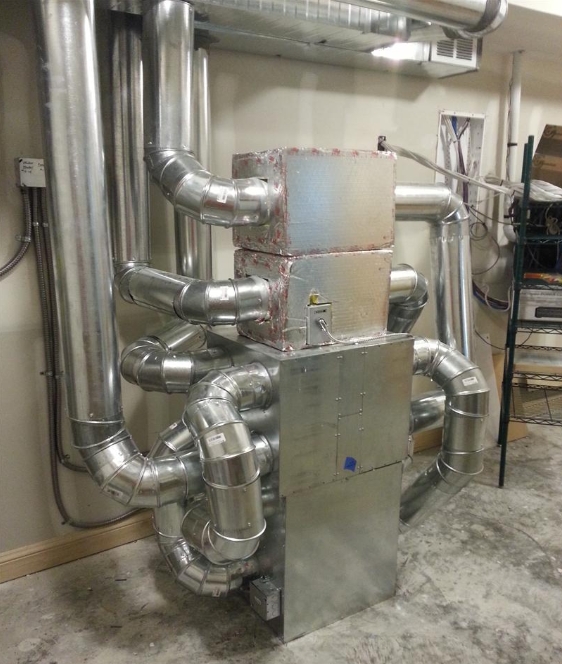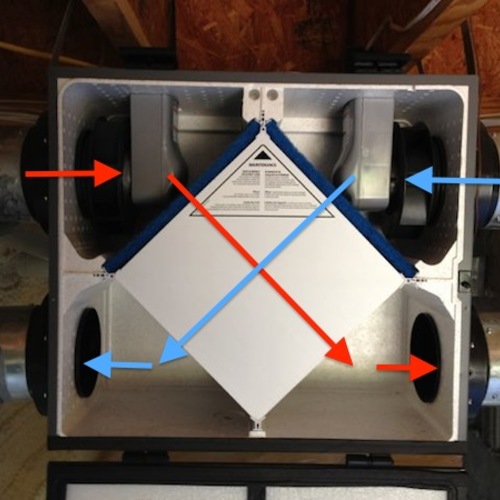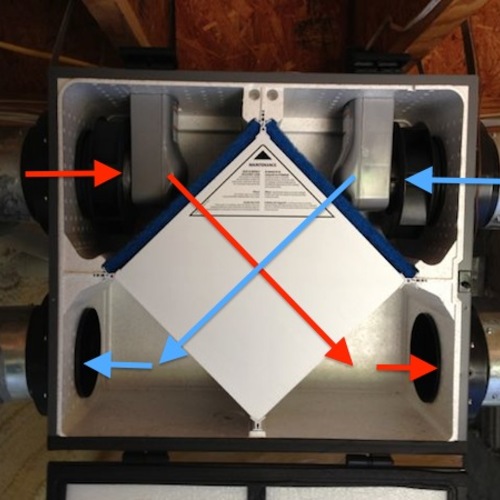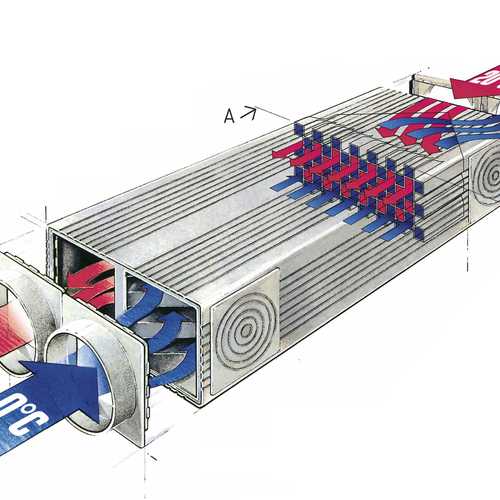
Image Credit: Image #1: Gregory Whitchurch
A small manufacturing company in Illinois called Build Equinox has developed a new ventilation appliance called the Conditioning Energy Recovery Ventilator, or CERV. Build Equinox was founded by an engineer, Ty Newell, and his son Ben Newell. (Ty Newell designed and built the Equinox House, which was described in a GBA article published in 2011.)
The CERV is a balanced ventilation system that includes an integrated air-source heat pump — a type of appliance that has been dubbed a “magic box” by Passivhaus designers. According to Ty Newell, Build Equinox has sold about 50 CERV units.
There is just one model of the appliance; Ty Newell told me that “one size fits all.” The CERV is unlike any other appliance sold in the U.S.:
Weekly Newsletter
Get building science and energy efficiency advice, plus special offers, in your inbox.

This article is only available to GBA Prime Members
Sign up for a free trial and get instant access to this article as well as GBA’s complete library of premium articles and construction details.
Start Free TrialAlready a member? Log in















7 Comments
CERV
Nice idea. Is it possible to use an air source heat pump water heater in combination with an HRV to both warm the air and remove stale air? This way we also produce domestic hot water. Maybe we could even capture some of the 20% waste heat from the HRV exhaust. I do like the sensor idea.
Response to Anders Lewendal
Anders,
Most heat-pump water heaters sold in the U.S. can't be used to "warm the air"; these water heaters cool the air in the room where the heat-pump water heater is located.
Japanese "Eco Cute" heat-pump water heaters are split-system water heaters; when these units become available in the U.S., it may be possible to use a heat-pump water heater for limited space heating. For more information, see Split-System Heat-Pump Water Heaters.
CERV
Does the CERV take into account the pollutants and VOC levels outdoors? I am not well versed in balanced ventilation systems, or air exchange systems in general, but I need to learn as much as I can. As the new homeowner of a very new, toxic home, I realize I need a balanced ventilation system of some sort to address the indoor air quality. I am removing as many toxic sources within the home as is feasible while I try to figure out what that system is supposed to look like, but I am also trying to be certain that I don't bring anything undesirable into the home in my attempt to get the contaminated air out. I love that the sensor is capable of knowing when the system does and does not need to ventilate the home based user-set parameters. However, if you reside in an area of generally poor outdoor air quality, possibly due to various traffic pollutants, undesirable VOCs in local residential or commercial settings, or any other typical contaminant that one may encounter around their home or in their neighborhood, is there a filtration or mechanism of some kind in the CERV itself ( or a standalone unit of some sort if the answer to that is 'no') that would address these concerns? If there is no such intervention, would that mean that the CERV would run continuously due to the potential intake of polluted outdoor air that its sensors are set to detect and remove, especially if the sensors are set at lower threshold levels?
“[Deleted]”
Expensive?
Maybe I'm in the wrong market, or talking to the wrong people but when I read " It’s fairly expensive — the installed cost is about $7,000 to $9,000" I have to wonder... what's going on when I just got a quote for an installed Carrier+ERV for almost $30,000???
Many, not all, passive or near passive house performance designers are looking to the equipment to help pay for the expensive windows. Also, these homes are quite small, so the 7-9 grand could very well be very close to the same cost percentage of your 30 grand carrier.
Response to Ethan T
Ethan,
Fair enough. Many homeowners would be happy to spend $7,000 to $9,000 for all of the features provided by the CERV.
That said, most homes in the U.S. need a heating system with more output than the CERV can provide. Your $30,000 Carrier heat pump plus ERV will provide ventilation, space heating, and air conditioning -- more features than the CERV can provide for all but the smallest homes.
Log in or become a member to post a comment.
Sign up Log in